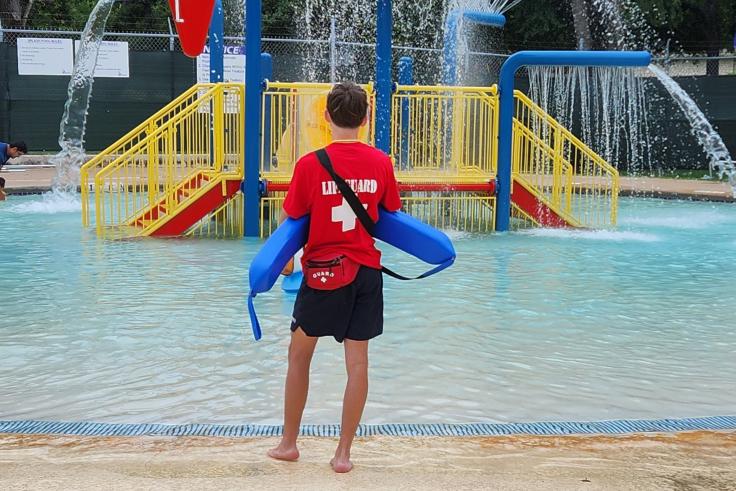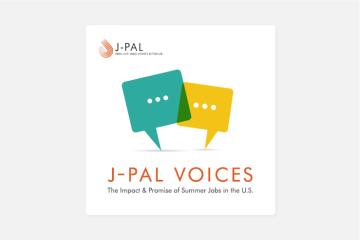
Paid summer jobs programs level the playing field for young people from low-income communities, raising summer employment rates and income and reducing involvement with the criminal legal system.

Summer jobs programs are an effective way to help youth find paid jobs. These programs open doors to jobs that would otherwise be out of reach.
Local governments in the United States and elsewhere that want to reduce young people’s interactions with the criminal legal system should expand paid summer jobs programs. These programs reduce arrests, jail time, and other types of costly court involvement—during summer and beyond. Few interventions have been so successful in reducing young people’s involvement with the court system.
If there isn’t available funding to serve every eligible youth, eligibility criteria and recruitment strategies can increase the impact of summer jobs. Making sure programs reach young people who have already had contact with the criminal legal system or who are disengaged in school can help ensure programs benefit youth who stand to gain most.
Early employment experiences can set the stage for years to come. Teenagers with jobs are more likely to earn more later in life. However, it can be harder for low-income youth to find jobs than their higher-income peers because of factors like fewer connections to employers and less exposure to career options. Helping young people access jobs can set them up for success by enabling them to build skills, a resume, and connections to local employers.
Summer jobs programs successfully boost employment rates and help young people earn money. Across programs in Boston, Chicago, and New York City, more than three-quarters of young people offered a spot in a jobs program secured a paid job for the summer, compared to less than one-quarter of youth not offered a spot. This difference shows how these programs open doors to jobs that would otherwise be out of reach. Participants also made an average of almost US$800 more during the summer than those not in the program. Surveys suggest that participants often used these wages to support their families with everyday expenses.
Summer jobs programs help youth avoid contact with the criminal legal system. Youth involved in the criminal legal system often face lifelong challenges, so programs that reduce early arrests and convictions matter. Summer jobs program participants were less likely to be arrested or sent to jail across programs in Boston, Chicago, Philadelphia, and New York City. These effects often continued beyond the end of the summer and through the following year. Researchers think this is because participants improved their social-emotional skills, changed who they spent time with or how they spent their time, or felt less financial pressure to engage in illegal activity.
Research shows that summer jobs programs can improve school outcomes like graduation rates and reduced absenteeism. Some benefits were seen for people aged 16 and older and those with frequent absences in Boston and New York. This could be because soft skills that summer jobs foster, such as being on time, can also help students at school. These programs connect youth to safe, supportive environments that foster positive youth development and provide sources of income.

“The full picture of the benefits of summer youth employment programs is rich and complex. It is a program that can move the needle on a variety of outcomes, from employment to involvement in the criminal legal system to education to youth development outcomes.”
—Yiping Li, Presidential Management Fellow at National Institute of Justice, participant of One Summer Chicago
Cost and design considerations
Providing paid positions with committed employers is the key to program success. In addition to jobs, some programs offer supplemental services to participants, such as mentoring or social-emotional learning support. However, these programs consistently reduced interactions with the criminal legal system, regardless of whether these services were offered. This suggests that paid jobs are the most impactful and should be prioritized. More evidence is needed to determine if or how supplemental services contribute to other program impacts.
Young people experiencing more serious challenges may benefit more from summer jobs programs. That doesn’t mean every young person facing difficult circumstances will benefit—but it does mean that summer jobs often make the biggest difference for those struggling the most to begin with.
There are open questions about how to design summer jobs programs to support longer-term employment. Most summer jobs programs don’t lead to higher rates of employment after the summer ends. An exception to this is if the program provides a letter of recommendation that can be used to signal job skills to a potential employer, which leads to small benefits. Research is still emerging on how best to do this in a way that does not inadvertently encourage dropping out to take a job. Research should dig deeper into understanding the programs’ potential for longer-term economic outcomes—for example, by measuring the impact of participating multiple summers in a row.
Local governments should leverage design lessons from successful summer youth employment programs. For example, recruitment for program participants should start many months in advance and happen in waves. This encourages engagement with youth who do not already have contact with the job market and who may face additional barriers to completing job application and enrollment steps.
Providing paid positions with committed employers is the key to program success.
Implementing partners
Implementers bring deep local knowledge, technical expertise, and a commitment to evaluation and learning as they bring these programs to life. Partners include the following collaborators (listed in alphabetical order); this list is not exhaustive.

Governments run the largest summer youth employment programs in the United States. In Boston, Chicago, Philadelphia, and New York City, city-run programs reach tens of thousands of youth. These programs provide summer jobs along with a suite of additional services, including skills training around conflict resolution, financial literacy, communication, and other socio-emotional learning topics. Partnerships with researchers have enabled some of those governments to expand both the reach and quality of their programs. For example, a longstanding research-practice partnership between the City of Boston and Northeastern University yielded robust evidence on summer jobs and led to recommendations to improve program efficiency and equity, large increases in funding, and a Mayor’s Youth Jobs Guarantee.
The role of philanthropy
Philanthropic funding has complemented government funding to ensure summer jobs programs reach as many young people as possible. The Smith Richardson Foundation, Third Sector Capital Partners, and William T. Grant Foundation have all made significant contributions to evaluations of summer youth employment programs. Summer youth employment programming is also a recipient of funding from the Social Innovation Fund, a government-funded initiative that awards grants to nonprofit intermediaries who then match the funding dollar-for-dollar before granting it to community-based organizations. This innovative funding model allows philanthropy to complement existing government funding and direct it to promising ideas, such as summer jobs for youth.
Discover more from J-PAL
J-PAL Voices: The Impact and Promise of Summer Jobs in the United States
Discover more from other sources
Building Opportunity: A Research-Informed Manual from Summer Youth Employment
Northeastern University, J-PAL, The Brookings Institution, and Arnold Ventures
Chicago jobs program reduces youth violence, Urban Labs study shows
University of Chicago News
How summer jobs programs can help save lives
Huffington Post
Photos:
(1) Credit: Shutterstock.com
(2) Credit: Shutterstock.com





